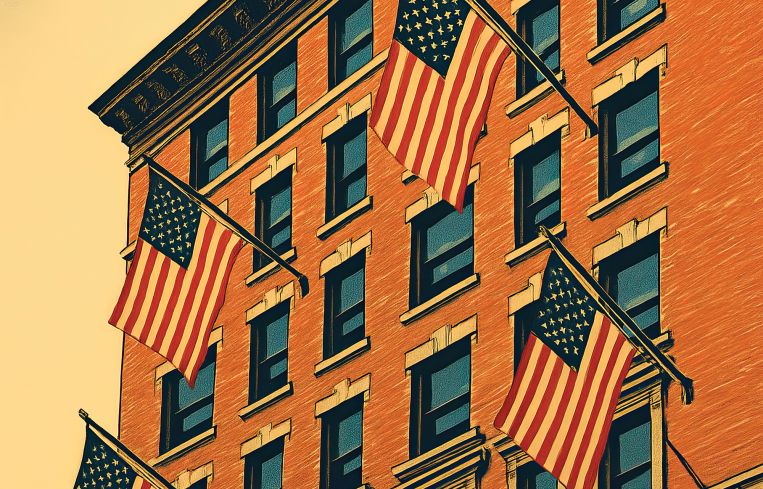International Flight: The Shifts in U.S. Condo Sales to Foreign Buyers
The Trump administration’s immigration and tariff turns have changed the market for foreign condo buyers
By Patrick Sisson September 23, 2025 9:17 am
reprints
The Trump administration has seen its policy goals around economic development and attracting foreign capital come into contention with its aggressive immigration enforcement and tariff policies.
How is that conflict playing out in the luxury residential real estate sector, much of it dominated by swanky condos? Recent statistics suggest different ways the Trump administration’s immigration and tariff policies have and haven’t rattled the condo market.
According to Jonathan Miller, president and CEO of New York-based appraiser Miller Samuel, his firm has been tracking a drop in foreign buyers this year, as new immigration enforcement policies have “terrified” many potential clients. Whereas international investors would typically make up about 15 percent of the condo purchases nationally, that number has dropped to 5 percent this year. As tourism from places such as Canada and Europe plummets, Miller said, it’s important to note that global tourism and real estate sales tend to be correlated.
A National Association of Realtors survey released earlier this year revealed that 18 percent of potential overseas buyers in the first quarter of 2025 cited immigration laws as a reason for not buying properties in the U.S., an 8 percent jump from 2024. Take Canada, both a key source of foreign real estate investment and a nation infuriated with the tariff and trade battle sparked by President Trump. Combine that sentiment with a weakening Canadian dollar, and it’s no surprise interest from Canadian buyers has plummeted this year.
Corcoran Sunshine’s data from New York City tells of a somewhat similar, if much less spectacular, drop in overseas purchases. Foreign buyers have made up 20 percent of condo buys so far this year, down 4 percent from 2024 — but up from 11 percent in 2023. It can be difficult to get a true handle on these figures, said Kelly Kennedy Mack, president of Corcoran Sunshine Marketing Group, the brokerage’s new development wing. Many overseas buyers use LLCs that obscure real names, condo inventory constantly shifts, and larger financial and currency concerns can make a difference. To Mack, the drop isn’t a “dramatic decrease or major fall-off.” Geopolitical factors are at play, but, if it was significant, there’d be a steeper drop. It’s more about demand and supply.
“There’s always some geopolitical issue going on around the world that’s going to affect some part of the foreign market,” she said. “But the U.S. continues to be a place where people are interested in investing their money and which they see as a safe haven for their money.”
The overall national condo market, especially in Sun Belt cities like Austin, has been softening all year. Average prices have dropped 1.4 percent across the board since 2012, according to market data firm Intercontinental Exchange. Plus, units have lingered on the market longer than in recent years, with a string of disappointing sales in South Florida, with some months seeing dips of 20 percent or more. A much-cited June New York Times story showed that the percentage of condo buyers in South Florida who were foreign had dropped precipitously.
Other markets, and analysts, see a different story playing out. The National Association of Realtors’ 2025 International Transactions report, which covered the 12 months ending March 31, found foreign buyers spent $56 billion on U.S. property during that period, with a 44 percent jump in the number of transactions over the previous 12 months. Roughly 15 percent of such buyers chose condos, with Canadians making up a significant portion of those purchases.
Alicia Cervera would be the first to tell you that foreign buyers haven’t fled the Miami condo market, long a haven for Latin American money. As the the managing partner of Cervera Real Estate, long a player in the Southern Florida real estate market, explained in mid-September, she had a story to tell, as she was calling from Lima, Peru, part of a tour of South and Central American countries from Mexico to Colombia, that she claimed were filled with willing buyers.
Latin American buyers were not leaving the U.S. market, she said, and she disputed the New York Times story that said as much. It was that more domestic buyers, and those from other parts of the globe, had been buying in Miami, her firm’s internal data showed, so it was imperative to be more aggressive selling international clients on locations like Domus in Miami’s Brickell and 14 ROC on Biscayne Boulevard.
As governments in Latin America shifted leftward recently, she suggested, capital started looking more toward the U.S., tapping into the pre-construction payment methods that have long been a staple of South Florida real estate.
There was certainly a glut of older condo product that buyers wanted to sell off, creating price deflation that was showing up in sales data. But the high end was still healthy, Cervera said, and still in demand, especially what she called “entry-level luxury” between $1.5 million and $2 million, that fit a Latin American customer base seeking to diversify its holdings and investments. It’s the “entry point to own the American dream.”
A recent Miami Herald analysis also found that over the last 18 months foreign buyers accounted for half of roughly 10,000 condo transactions — in many cases wealthy Latin Americans probably looking to “move their money, not their families.”
Peter Zaitzeff, a sales director at SERHANT in New York City, said he’s still seeing a very robust foreign investment drive, and has seen it for the last eight to 12 months. In fact, there’s been an increase in 2025 versus 2024 both in terms of the number of buyers and what they’re willing to spend.
The Asian market, especially Chinese buyers, still are seeking out properties to use as they visit sons and daughters attending universities like Fordham and Columbia. And the NAR report finds Chinese buyers are the busiest when it comes to U.S. residential property, representing 15 percent of the foreign buyer pool. One recent buyer looking at a condo at 200 Amsterdam on the Upper West Side told Zaitzeff she had two kids attending New York University and wanted to be able to visit both.
“They’re into the fashion, they’re into the brands that New York culture brings to the table, and they want to send their kids to school here,” he said. “As long as that’s happening, we’re going to continue to see a solid amount of foreign investment coming from Asia.”
Corcoran’s Mack also noted that Manhattan’s new supply of condos has reached an 11-year-low, with just 3,600 units on the market, over a third of which were at just six properties. Miller Samuel data showed months of Manhattan residential supply — a measure of the time it would take to sell existing inventory at an annualized rate — has been shrinking in recent quarters, down 4.5 percent in the second quarter of this year alone. Sales are decreasing year-over-year, and what Mack’s firm has tracked as a small drop in overseas buys might be part of that larger trend.
Other New York-based brokers have similarly upbeat takes on the state of international condo consumption, citing the nation’s reputation as a safe haven for investment, and the continued demand for wealthy parents to purchase housing close to where their college-age kids are studying as sturdy sources of demand.
Zaitzeff’s colleague at Serhant, luxury broker Ravi Kantha, said some buyers he’s talking with have mentioned things like tariffs and tightened immigration enforcement as concerns, but it’s not as of yet denting sales, especially for ultra-high-end properties in New York City.
There have been some shifts in buyers from different nations, for a variety of geopolitical reasons, Kantha said. Russian money has dried up even further since that nation invaded Ukraine in 2022, he said, and tariffs have been “a big topic of conversation” among Canadian and European buyers. But Middle Eastern and Chinese money remain interested in the U.S., he said.
“The ultra-high-net-worth crowd,” Kantha said, “they’re just going to buy the best product, and pay what they need to in order to get it.”



